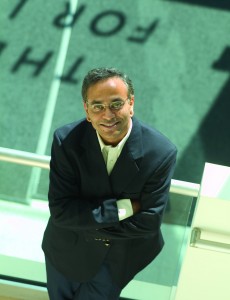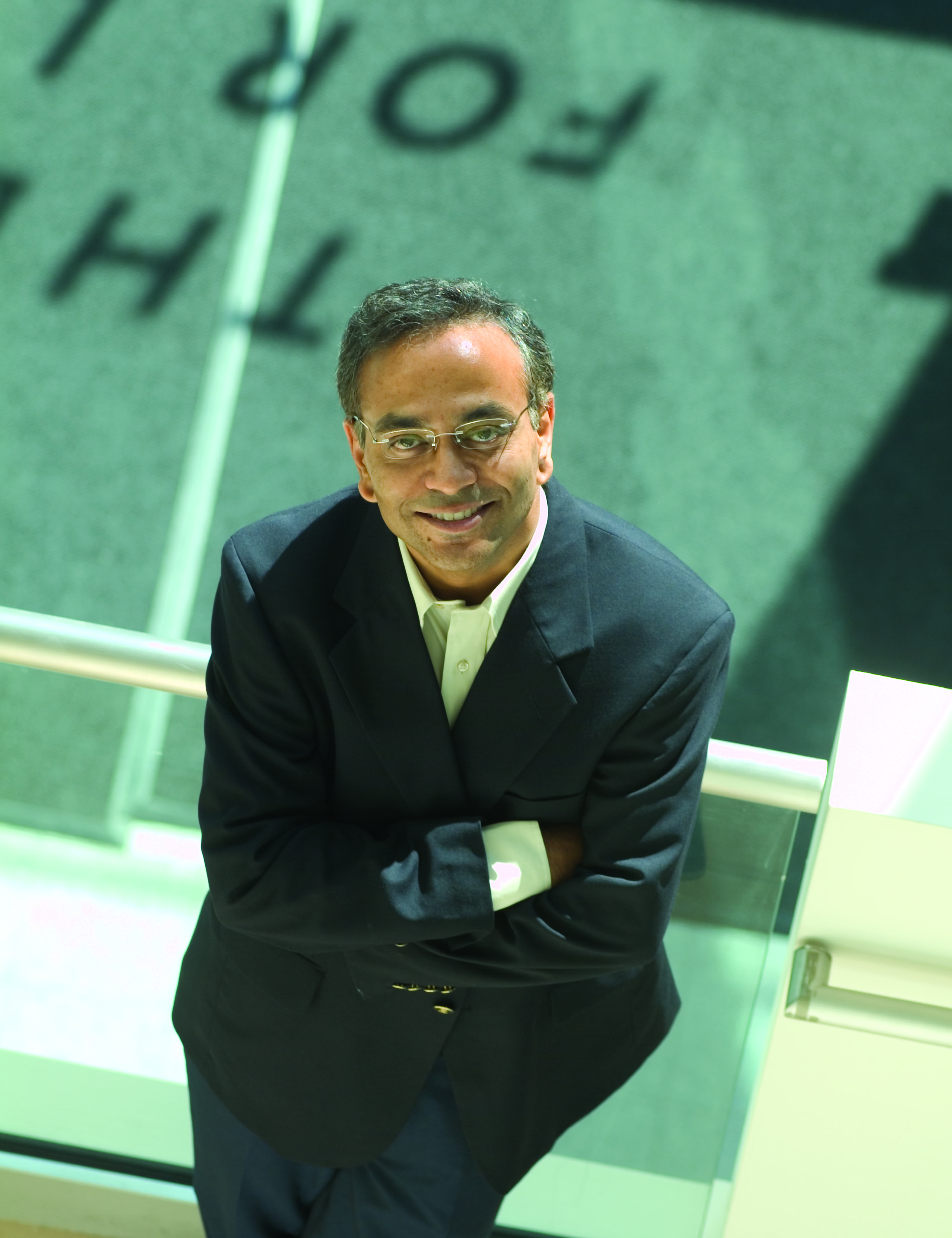An India-born MIT professor is using neuroscience to restore the sight of blind children in India. Data culled from the project are simultaneously advancing his field research
- About 314 million people are visually impaired worldwide, 45 million of them are blind
- About 87% of the world’s visually impaired live in developing countries
- India is home to nearly 30% of the entire blind population of the world — many of them children
- Orbis International estimates that 60% of India’s blind children die before reaching adulthood
- In over 50% of these cases, blindness is treatable or preventable
- However, most children never receive medical attention
(WHO: May 2009)
 SRD, her public identity, was born blind in a village in Gujarat. She remained so until the age of 12 after which she underwent surgery for the removal of dense congenital cataracts in Gujarat. SRD now earns money as a maid for five families in her town. She travels to the families’ houses, which are 1-2 km away, and recognise their faces. She does not use navigational aids, such as a cane, though she occasionally asks passersby to guide her.
SRD, her public identity, was born blind in a village in Gujarat. She remained so until the age of 12 after which she underwent surgery for the removal of dense congenital cataracts in Gujarat. SRD now earns money as a maid for five families in her town. She travels to the families’ houses, which are 1-2 km away, and recognise their faces. She does not use navigational aids, such as a cane, though she occasionally asks passersby to guide her.
Ophthalmologists typically believe that treatment is of little use once a child is older than 7 or 8 years of age, since recovery is likely to be limited or non-existent, notes Pawan Sinha — an associate professor of computational and visual neuroscience at the Massachusetts Institute of Technology (MIT). Their belief stems from the theory of a “visual critical period”, which was tested by David Hubel and Torsten Wiesel in the sixties, and that won them the Nobel Prize in 1981.
SRD’s results, however, demonstrated that treatment — even at age 12 — could have good outcomes. Sinha and his team evaluated SRD’s performance “on an extensive battery of visual tasks”. “We found that although SRD’s acuity (vision sharpness) is compromised, she is highly proficient on mid/high-level visual tasks,” he notes, adding: “These results suggest the human brain retains an impressive capacity for visual learning well into late childhood.”
In 2003, Sinha formalised his new thinking (counter to what Hubel and Wiesel theorised) in Project Prakash (‘Light’ in Sanskrit) to gather similar data. The base for the project in India was set up at the Shroff Charity Eye Hospital (SCEH) in New Delhi. Ever since, he and his graduate students, Yuri Ostrovsky, Ethan Meyers and Aaron Andalman, have worked with ophthalmologists at the major eye-hospitals in India and conducted several studies with individuals who gained sight late in life.
Over the past few years, SCEH alone has maintained an outreach programme that brings in thousands of patients from villages in Delhi, Uttar Pradesh and Rajasthan for sight restoring surgery. India is home to nearly 30 per cent of the entire blind population of the world, notes Sinha, adding that “most children, however, never receive medical attention. The challenges of poverty, compounded by the visual handicap, exact a grim toll.”
“There is a clear humanitarian need for treatment and awareness of childhood blindness. And Project Prakash seeks to address this need,” asserts Sinha. Till date, nearly 20,000 children have been screened and treatment has been provided to over 700 children. The transportation, treatment, hospital stay and follow-up examinations are entirely free of charge for the children. Sinha’s eventual goal is to help at least 1,000 children each year. Plans are underway for a 50-bed hospital for visual rehabilitation in New Delhi.
“It costs around $1,000 to provide such children with treatment and care besides assisting them post-surgery,” notes Sinha who hopes to raise $15 million to build a Prakash Center in New Delhi that will provide medical care and basic education and continue the scientific experiments.
Project Prakash is simultaneously helping Sinha and his team advance the objectives of neuroscience. “The Prakash initiative is beginning to create a remarkable population of children across a wide age-range. This gives us an opportunity to continuously follow the development of visual skills and associated neural markers — from before the sight restoration treatment to after. The experimental data we have gathered so far have already begun challenging some long-held conceptions regarding brain plasticity and time-lines of learning. We are finding that the human brain retains an ability to acquire complex visual tasks even after several years of congenital blindness.”
The patterns of errors that the children make in these controlled experiments allow Sinha and his team to infer the nature of object representations. “We are complementing these studies with brain imaging to assess topographical changes in cortical organisation as a function of time past surgery and their correlations with the behaviorally observed skill acquisition.”
Sinha also believes that Project Prakash has unwittingly helped him find an answer to autism. “We know that motion plays a crucial boot-strapping role in vision, and motion processing has been shown to be deficient in autism,” Sinha says. “Our working hypothesis is that autism might, at least in part, be the manifestation of difficulties in processing dynamic information.” This theory, however, is being debated by some experts who assert that the disorder’s fundamental deficit is perceptual, rather than social.
Nevertheless, Sinha who got his undergraduate degree in computer science from IIT Delhi and his Masters and doctoral degrees from MIT, is a man of many parts. For instance, along with his collaborators, he received an entry in the 2003 Guinness Book of World Records as creators of the smallest book — the New Testament of the King James Bible reproduced on a five-millimeter tablet by MIT. It comprises180,568 words, or one million- plus characters.
Another Sinha creation — the smallest Bhagwad Gita — got him a spot in the Limca Book of World Records. The Gita contains 18 chapters and 700 shlokas — in the form of 24 carat gold pendant which can have it from selected jewellery stores in Ludhiana for around $300. The money is expected to be spent on the after treatment of congenitally blind children whose families are not able to afford medical expenses.
Sinha experiments are not restricted to Project Prakash. He even experiments with his own toddler Darius to teach a robot called ‘Dylan’ to see without using a human-programmer, and without specifying what objects have x name and x meaning and x purpose. By attaching a camera to his baby’s head, the information recorded will serve as the information the robot is to learn from. Gradually, the acuity will go from approximately 20/800, that of a newborn baby’s, to 20/20, that of an adults. If the robot is able to learn to use sight as a literal sense, scientists around the world can mimic Sinha’s process to teach robots how to use other senses as well.
